Burying the pig sty
Source:Globaltimes.cn Published: 2013-3-13 22:01:43
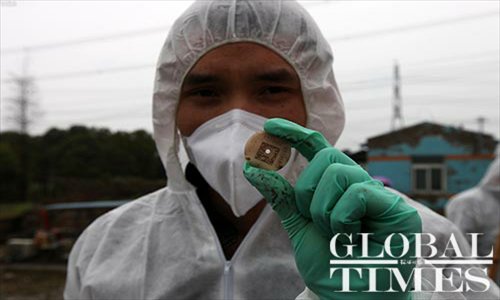
An employee from the Shanghai Agriculture Committee on March 13 displays an identification tag cut from the ear of a dead pig. The number on the tag showed that this pig is from Jiaxing, East China’s Zhejiang Province. Photo: Cai Xianmin/GT
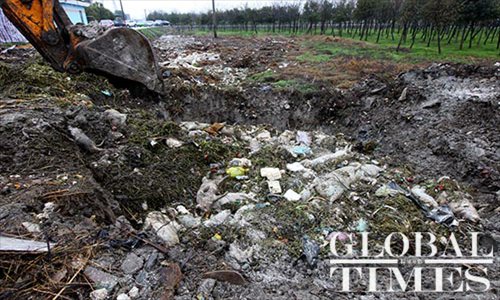
Dead pigs that were removed from the water are buried at the site with an excavator, at the Xiaomao dock in Shanghai’s Jinshan district on March 13. The Xiaomao dock is located on the upper reaches of the Huangpu River, which supplies Shanghai with some of its drinking water. Photo: Cai Xianmin/GT
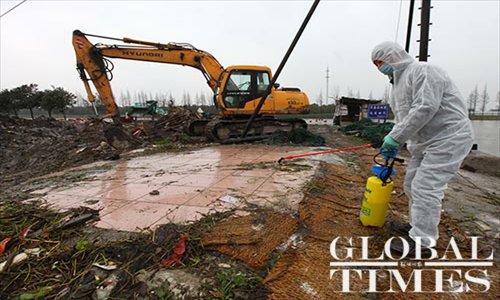
An employee from the Shanghai Agriculture Committee sterilizes the site where dead pigs were buried on March 13. Photo: Cai Xianmin/GT
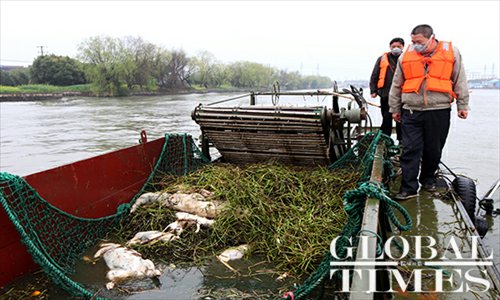
Employees from the Shanghai Water Authority salvage dead pigs on March 13 from the Huangpu River, which supplies Shanghai with some of its drinking water. The Water Authority sent 36 boats to participate in the salvage operation. Photo: Cai Xianmin/GT
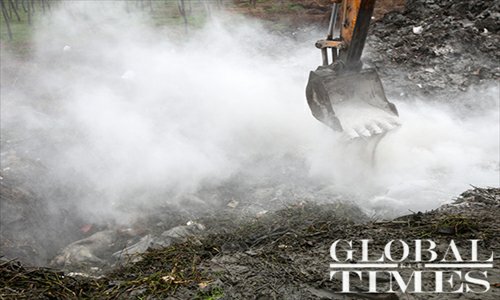
An excavator scatters lime powder to sterilize dead pigs as they are buried on March 13. Photo: Cai Xianmin/GT
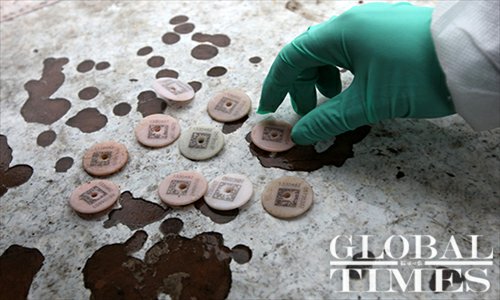
An employee from the Shanghai Agriculture Committee displays identification tags cut from the ears of dead pigs on March 13. The numbers on these tags showed that these pigs are all from Zhejiang Province. Photo: Cai Xianmin/GT
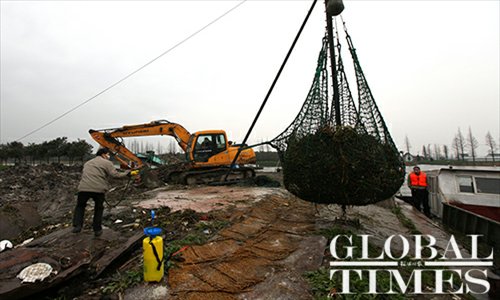
Employees from the Shanghai Water Authority remove dead pigs from boats on March 13. Photo: Cai Xianmin/GT
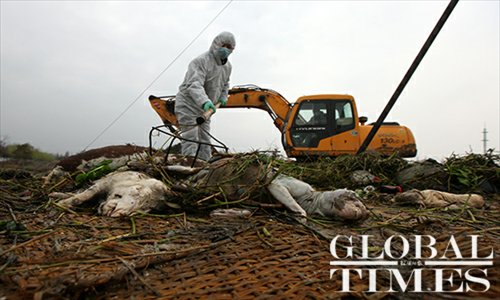
An employee from the Shanghai Agriculture Committee looks for identification tags attached to pig carcasses on March 13. Photo: Cai Xianmin/GT
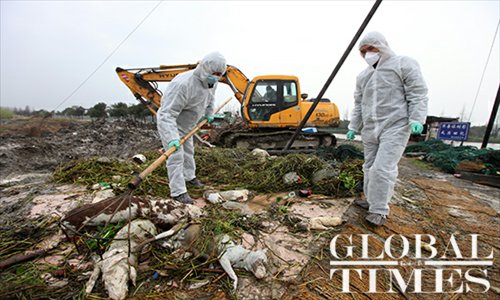
Employees from the Shanghai Agriculture Committee look for identification tags attached to pig carcasses on March 13. Photo: Cai Xianmin/GT
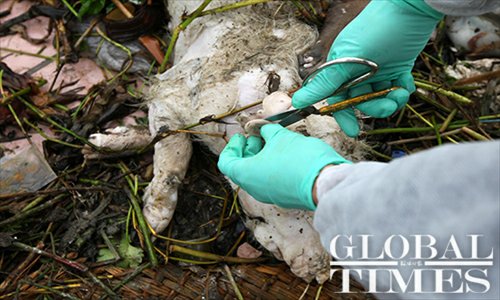
An employee from the Shanghai Agriculture Committee cuts an identification tag off a dead pig on March 13. Photo: Cai Xianmin/GT
Posted in: Society, China